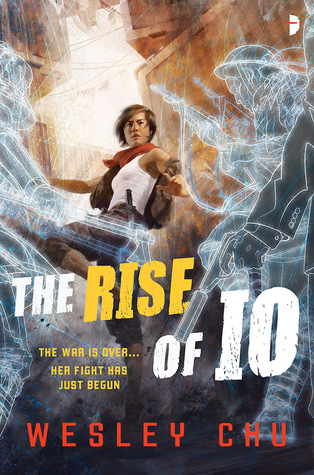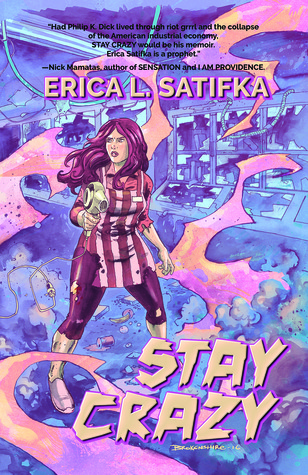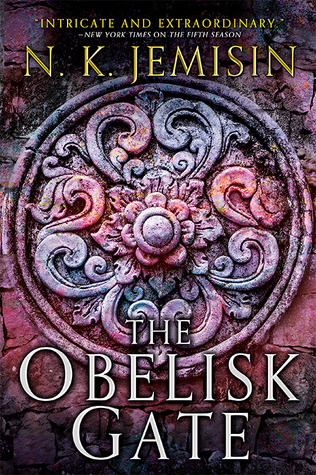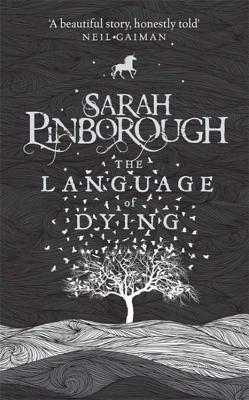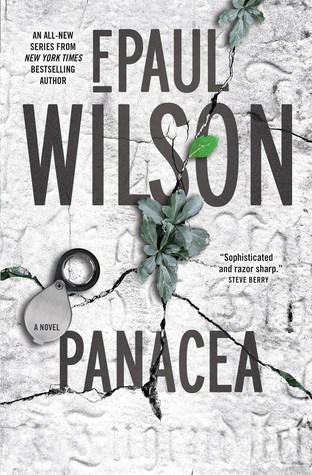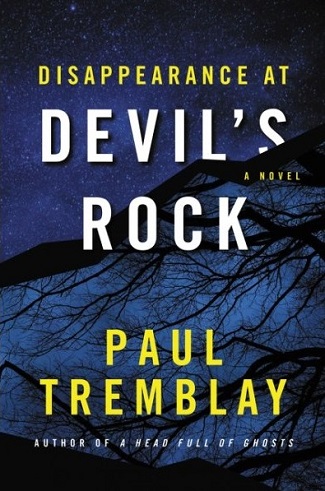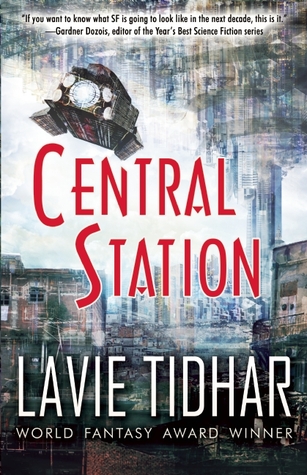The Lives of Tao and the subsequent books in Chu’s fantastic series were some of my favorite books from the past few years, so you can image how excited I was to find out he was starting another series set in the same world. The Rise of Io takes place some years after the Tao books (and I say “some years” because I’m not exactly sure how many) and contains many of the elements we’re familiar with, if you’ve read that series. But this time the setting is Surat, India, and the main character is a tiny but fierce and plucky girl named Ella Patel. Like Roen before her, Ella is thrust into the life of the quasing against her will when she unwittingly becomes host to a Prophus named Io. But Ella and Roen couldn’t be more different. Ella might be one of my favorite fictional characters ever, I simply loved everything about her. But perhaps I’m getting ahead of myself. If you haven’t read the first series, here’s a little background about this world. The quasing are an ancient alien race who crash-landed on Earth millions of years ago, and since then have evolved and managed to survive…
The striking graphic novel-like cover immediately drew me to this book, but I was also captured by the story of a slightly unlikable girl named Emmeline who is trying to overcome a mental illness and save the world at the same time. Satifka is a new author for me, and I absolutely loved her writing, and the hilarious dialog between the characters had me chuckling out loud. Em is an interesting protagonist in that she didn’t grab my sympathy until about halfway through the story. She doesn’t have much of a filter and is likely to blurt out inappropriate comments just about everywhere, but she has a good heart and is simply trying to stay afloat after her first year at college goes horribly wrong. Stay Crazy reminded me a little of Grady Hendrix’s Horrorstör, which also involves an evil entity taking over a retail space, so if you enjoyed that book, you will have a blast with this too. Nineteen-year-old Emmeline has come home to Clear Falls, after an incident at college left her with gaps in her memory and a diagnosis of schizophrenia. Now she’s seeing a therapist and living at home with her mother and sister and trying to…
The Fifth Season was one of my top ten books of 2015, and so I was beyond excited to start reading the second book in the series, The Obelisk Gate. I’m happy to say it was a more than worthy follow-up and I enjoyed it immensely. I have to admit I enjoyed The Fifth Season just a touch more, due to the slower pace of The Obelisk Gate and a slightly more confusing story structure. But overall this is a wonderfully intricate story with multilayered characters, a story that demands you pay attention and savor every new revelation. As she did in the first book, Jemisin treats her readers as intelligent beings and forces you to make many of the connections without spelling everything out. Be warned: this is a series you must read in order. Do not attempt to read The Obelisk Gate without reading The Fifth Season first. You will be lost, I guarantee. Also, there are some mild spoilers ahead if you haven’t read the first book. Jemisin’s story alternates between two main points of view, with a third (and even a fourth, if you count the “interludes”) thrown in at times just to shake things up….
This is my first Sarah Pinborough book, and ironically it’s not the type of story she usually writes. But it demonstrates just how good a writer she is, so no matter what the subject matter, I know I’ll be picking up her other books in the future. The Language of Dying is a short novella, but within these pages is a very powerful story about loss in all its many forms. I knew going into it that it was about a woman caring for her dying father, but this story turned out to be about so much more. The narrator, an unnamed woman who is about to turn forty, cares for her father who has been living with her for the past year, slowly dying of cancer. The story focuses on his last days, as his doctors have told her the end is near. She reluctantly contacts her four siblings and asks them to visit, and as they arrive one by one, we get to know the fraught and volatile family relationships among this group of brothers and sisters. Peter, the eldest, has led a life of womanizing and has had many ups and downs in his high-powered career. Elder…
I started reading The Devourers with very little knowledge of the story, as I usually try to avoid re-reading the story synopsis when I start something new. And so I wasn’t quite prepared for such an unexpected combination of stunning writing and visceral imagery. This is a tale about werewolves, but they aren’t the sort you might be familiar with. Das’ beasts don’t simply kill humans for sport, they actually devour them down to the bones (hence the title), and then they take the smallest bones and weave them into their hair and skin as decorations. The actual transformation from human to “second self”—what the werewolves call their changed state—is told in vague descriptions that let each reader come to their own conclusions about exactly what these beasts look like. The Devourers is all about stories, and Das has constructed a fascinating story within a story. It takes a little time to figure out just what’s going on, so the beginning felt a little slow. But this should by no means turn you off this book. I’ve always enjoyed this method of storytelling, and Das is devilishly brilliant at it. The story begins in Kolkata, India, with a chance meeting…
In my “old” book collecting days, F. Paul Wilson was one of the authors whose books I bought and read, but it’s been years since I’ve even thought about him, until Tor asked me if I’d like to read his latest. He’s one of Stephen King’s contemporaries and published his first book in 1976, and I was curious to see what he was up to. Most authors don’t have that kind of staying power, but F. Paul Wilson, like King, has proven he’s a born storyteller, and I can attest to the fact that he hasn’t lost his edge. If anything, he’s better than I remember. Panacea was a wild adventure ride across several continents, as our characters search for the elusive “panacea” that may or may not be real, which can cure any disease. Wilson combines all the elements I love in just under 400 pages—adventure, action, humor, danger, mystery, fantastic characters and perfect pacing. If there was ever a “summer read,” then Panacea is it. I love my thoughtful literary science fiction and complex fantasy, but honestly, nothing beats a down-and-dirty adventure story. Laura Fanning is a medical examiner who is routinely called to murder sites to investigate bodies, but…
Having read lots of enthusiastic reviews for Tremblay’s A Head Full of Ghosts, I was eager to try his latest. Tremblay has a talent for establishing a creepy atmosphere with very little information to go on. The reader is given small brushstrokes—a glimpse of a shadowy form lurking in the dark, a face peering through a window, pages from a diary scattered on the floor—and then must piece these things together to form an idea of what’s happening. It’s a very effective writing style and creates some great tension, but it can also be frustrating when nothing really happens until the very end. Sadly, I found myself bored at times with Disappearance at Devil’s Rock, especially the middle parts between the exciting opening scenes and the final reveal. In all honesty, I did have a rather fractured reading schedule this past week, which rarely improves the flow of a story. But I felt uninspired to pick the book up when I did have time to read, which frankly, makes me sad. However, having said all that, Tremblay is a wonderful writer and his book touches on a topic that many readers will relate to. The story opens at an emotional moment that…
This is the second book I’ve read by Whiteley, whose last book from Unsung Stories, The Beauty, was shortlisted for the Shirley Jackson Award and was a favorite in the SFF blogging community. Although I was the black sheep and didn’t love it as much as some people, I wanted to read her follow-up novella, The Arrival of Missives, which I found to be much more accessible. While The Beauty was just a little too far on the “weird” side for me, I really enjoyed The Arrival of Missives, especially the main character, a plucky, energetic and extremely smart young woman named Shirley. (OK, not so keen on her name, but the story does take place in the 19th century, when “Shirley” might have been all the rage!) Shirley is a character ahead of her time, where she is expected to marry and be a helpmate to her future husband, raise a family and keep her mouth shut. But Shirley has other plans. She’s fallen in love with her teacher, Mr. Tiller, and wants to go away to college, get a teaching degree, and come back to her village and teach alongside him. But her plans are sidelined when she…
Matt Wallace’s Sin du Jour series is back with another great installment, and this time around the action is crazier than ever! If you haven’t started this series, I recommend starting at the beginning and reading the novellas in order, simply because Wallace sometimes references events in earlier books. Also, we get to know the characters better as the series goes along, and it’s fun to see each person grow and develop. In case you’re new to the series, Sin du Jour is a catering company that caters to the supernatural crowd, and while you may think that catering is a bland and safe occupation, there is nothing remotely safe about the jobs that Sin du Jour takes on. And that’s what makes these books so addictive. Each installment has the Sin du Jour gang working on a different catering job, and in Pride’s Spell it’s a movie premiere after-party. That’s right, the New York-based company is heading to Hollywood, giving Wallace a fantastic opportunity to skewer the movie business with his particular brand of snarky humor. When the story opens, executive chef Bronko has booked his catering crew into two different events at the same time, on two different coasts….
I went into Central Station completely blind, which is sometimes the best way to experience a book. So after a few chapters of seemingly unrelated characters and events, I finally caught on that this novel is a series of interconnected stories whose characters circle around each other, now and then crossing paths, each one unexpectedly connected to the next. As the story unfolds, the reader is introduced to the people who live in Central Station, a buzzing, hub-like city that reaches high into the clouds, a place of arrivals and departures, as people leave from the spaceports to Mars or Titan. My initial puzzlement in the beginning soon turned into delighted amazement as Tidhar’s unusual world began to unfold. If you’re looking for an action-packed adventure, heavy on plot, then Central Station will disappoint you. There is very little plot to be found here, although there is a central mystery that threads its way through the chapters. What you will get, though, is just as good: incredible world-building, beautiful writing, and emotional moments between characters that celebrate what it means to be human. Set far in the future, each chapter introduces us to a new character and explains his or her…

